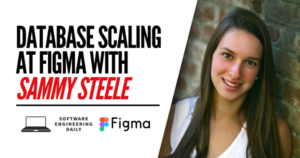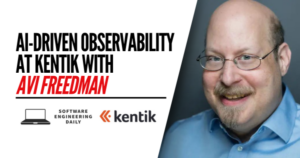Chronosphere with Martin Mao
Podcast: Play in new window | Download
Subscribe: RSS

 Observability software helps teams to actively monitor and debug their systems, and these tools are increasingly vital in DevOps. However, it’s not uncommon for the volume of observability data to exceed the amount of actual business data. This creates two challenges – how to analyze the large stream of observability data, and how to keep down the compute and storage costs for that data.
Observability software helps teams to actively monitor and debug their systems, and these tools are increasingly vital in DevOps. However, it’s not uncommon for the volume of observability data to exceed the amount of actual business data. This creates two challenges – how to analyze the large stream of observability data, and how to keep down the compute and storage costs for that data.
Chronosphere is a popular observability platform that works by identifying the data that’s actually being used to power dashboards and metrics. It then shows the cost for each segment of data, and allows users to decide if a metric is worth that cost. In this way, technical teams can manage costs by dynamically adjusting which data is analyzed and stored. Martin Mao is the Co-founder and CEO of Chronosphere and he joins the podcast today to talk about the growing challenge of managing observability data, and the design of Chronosphere.
 This episode is hosted by Lee Atchison. Lee Atchison is a software architect, author, and thought leader on cloud computing and application modernization. His best-selling book, Architecting for Scale (O’Reilly Media), is an essential resource for technical teams looking to maintain high availability and manage risk in their cloud environments.
This episode is hosted by Lee Atchison. Lee Atchison is a software architect, author, and thought leader on cloud computing and application modernization. His best-selling book, Architecting for Scale (O’Reilly Media), is an essential resource for technical teams looking to maintain high availability and manage risk in their cloud environments.Sponsors
Miro is one of the platforms that I think has been really creative about how it’s incorporating AI. I created a dependency mapping on a Miro board to help think through a new software system. The idea was to visualize direct and indirect dependencies, and refine the connections between them.
The AI features helped summarize and cluster the information, making it easier to understand and work with. I’m also impressed with Miro AI’s ability to auto-generate images from text. This has a lot of value for software and product teams that need to do dynamic brainstorming and idea development.
Find simplicity in your most complex projects with Miro. Your first three Miro boards are free when you sign up today at miro.com/Podcast.




















